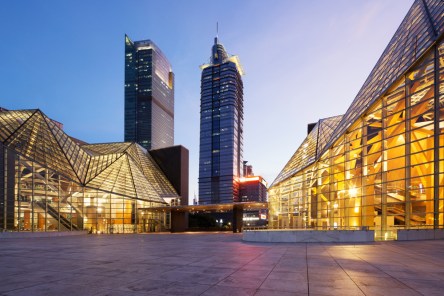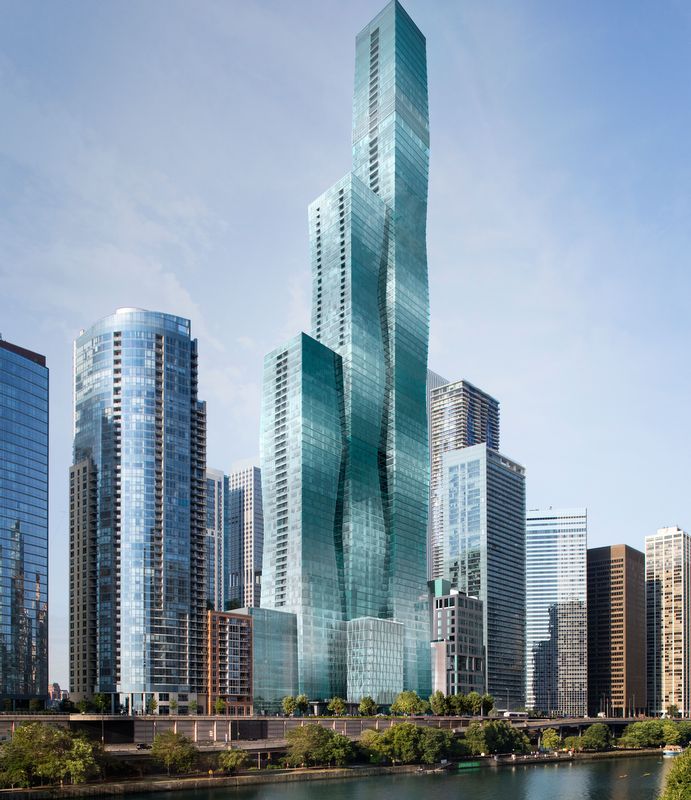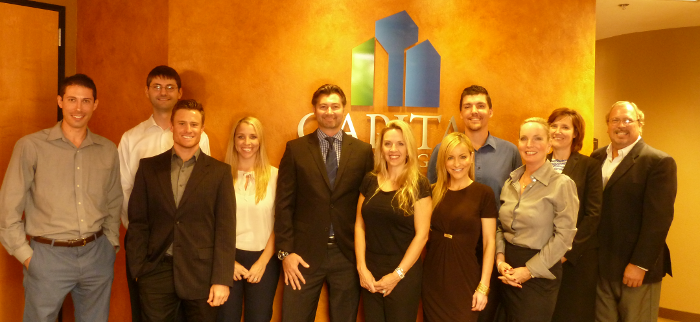Across the U.S., commercial and residential property owners are required to comply with ENERGY STAR® energy benchmarking and transparency policies. In these jurisdictions, metrics ranging from electricity usage per square foot to greenhouse gas emission volumes must be reported to the U.S. Environmental Protection Agency ENERGY STAR® Portfolio Manager®, the most widely used energy reporting compliance system in North America. Gathering data Gathering the volume of required energy consumption and billing data and submitting it can be daunting. This is especially true for property management staff who are short on time or energy expertise. Fortunately, clients using the Yardi Energy Suite can draw on resources at every stage of the process. “We have many creative ways to get whole building data that aren’t available from most other property management software providers,” said Christy Cannon, a solutions consultant for Yardi Energy. For example, Energy Efficiency offers a cost-effective alternative to shadow metering. This method tracks individual energy usage in multi-tenant buildings by reading tenants’ utility meters for accurate billing. The data, along with common area usage from utility bills, is pushed into Portfolio Manager and used to generate a performance score. “Along with generating a score, the data can produce some really good metrics that help building owners understand their performance,” Cannon said. Bringing clarity with meters & dashboards Yardi’s manual utility meter reading service can read resident or tenant utility meters monthly, bimonthly, quarterly or at other intervals. Monthly or bimonthly readings allow the property to apply for ENERGY STAR Building Certification. A mobile meter reading app transfers the data into a dashboard where it’s aggregated into whole building data. “This approach provides a granular look at consumption, and we can separate common areas from tenant areas for greater clarity,” Cannon said. Another approach...
Shopping Malls Adapt
Experiences, Tech Open a New Era
Shopping malls, which McKinsey has defined as “the heart and soul of communities, the foundation of retail economies and a social sanctuary for teenagers everywhere,” have been under severe pressure from the proliferation of e-commerce and other forces. Although shutdowns and consumer reluctance to shop in person reduced average mall foot traffic by 90% at the pandemic’s outset, COVID-19 isn’t wholly to blame for the decline; it merely accelerated trends already in place. In 2014, McKinsey asserted the traditional mall as being “at a critical inflection point,” with “a storm of global trends coming together at the same time to cause malls to change the role they play in people’s lives.” In the subsequent years, “the single biggest factor in the decline of foot traffic at shopping malls has been the rise of online shopping,” says business content platform MarketScale. A record 12,200 U.S. stores closed in 2020 and about 125 consumer goods and retail companies filed for bankruptcy that year, on top of almost 6,000 stores that closed in 2019. Though suburban foot traffic has nearly returned to 2019 levels, foot traffic at urban shopping centers and malls remains 16% below pre-pandemic levels. Traditional mall anchor tenants like Neiman Marcus and J.C. Penney declared bankruptcy recently and reduced their store presence, while gas prices, COVID-19 variant surges and supply chain issues further complicated the issue. But while the challenges are undeniable, don’t count the mall out as a preferred shopping venue just yet. Retail foot traffic rose 61% during Black Friday 2021 compared to the previous year, according to JLL, while average foot traffic was up 27% in January 2022 over January 2021. DigitalSignageToday reports that “industry experts believe the mall is ready for a comeback. It will look different, though, and leverage technology...
Recruiting for Commercial...
Strategies + Prop Tech
Commercial real estate still faces a hiring crisis. Though pipelines are ready to burst, employment levels are at a 50-year low. Talent recruitment poses a challenge throughout real estate management, but commercial firms face unique battles that linger from the Great Recession. Only fresh strategies can help lift these organizations out of the hiring deficit. Why is Hiring Still an Issue? Though the Great Recession ended about a decade ago, we are still feeling the aftershock. In the midst of the economic slump, commercial firms stopped hiring. As the nation reeled towards recovery, hiring resumed with the exception of entry level positions. “That lack of training has created a shortage of people who can step into mid-level positions right now,” explains Dianna Rudd, senior director of facility staffing and recruitment at IMPEC Group of California. Her organization offers workplace consulting and witnessed the hiring drama firsthand. As a result, the industry also dropped off the radar with prospects. Fast-forward and we are still struggling with a shortage of entry-level and mid-tier talent. For example, it took 10 views of a job posting before someone would apply back in 2006. In 2018, it took about 30 views. What Hasn’t (Really) Worked To bolster recruitment efforts, commercial organizations increased compensation by nearly 16 percent from 2013-2018. This rate is even higher for C-level executives, reports National Real Estate Investor Online. Rates are reported between 20 and 30 percent higher for executives. But offering more money hasn’t solved the problem. Other industries have recovered while commercial real estate organizations struggle to generate interest. Though the current national unemployment rate fluctuates around a healthy 3.7 percent, commercial real estate faces a nearly negative unemployment rate. Competitive compensation packages are a viable way to promote engagement. The additional strategies...
Conscious Commercial
One Mado at Serenbe
Imagine an oasis of calm just outside of the bustling city, a place where the community is structured around wellness and a connection with nature. Now imagine that this place has as many fun shopping and entertainment options as a conventional neighborhood– without conventional waste issues. This place exists and it’s called Serenbe. Welcome to Serenbe The New York Times calls the development “a utopian experiment in new urbanism being molded out of Georgia red clay ” about 30 miles southwest of Atlanta. More than 700 residents call Serenbe home. The community is often called together for music festivals, goat yoga, movie nights, wine tastings, and local theater performances. As provincial as it sounds, Serenbe is not a haven for barefoot wanderers and struggling artists. Homes start at $1,400 per month for a 600 square-foot apartment and max out shy of $2,000,000 for a single family home. Those are high price tags for Chattahoochee Hill Country, an otherwise unassuming rural community. With that said, Serenbe is probably the coolest countryside hamlet in the southeast for its emphasis on wellness and sustainability. Conscious Convenience For several years, development focused mostly on residences, often countryside getaways for Atlanta’s elite. Commercial construction has established a presence in the community—still abiding by community virtues—but offering more experiences and conveniences for residents. Four complexes form the hub of shopping at Serenbe. Each has a unique focus such as art, education, agriculture and health. The Mado District is the latest addition with an emphasis on health. One Mado will be a $250 million, 30,000 square-foot mixed-used development that is an alternative to the quintessential strip mall. Tenants will likely include health and wellness specialists such as a chiropractor, massage therapist, acupuncturist, and other holistic practitioners. There are also parcels for...
Pace Setters
Realcomm Tech Forecast
Appropriately for the “acceleration” theme of its global conference this week, Realcomm recently hosted a webinar in which several experts, including Yardi’s Alex Stanton, commented on the rapid pace of change in commercial real estate and new data management technology entering the marketplace. Stanton, regional director of commercial sales, said the movement toward an integrated concept of information management is so profound that it’s altering the very concept of the lease. “Client,” for example, no longer means a single entity but instead a broader category of people to be managed with increasingly granular information. “Space” encompasses coworking, parking and amenities as well as traditional offices. “Tenants” are morphing into “guests” whose service expectations require the collection and management of an expanding body of information including such non-real estate sources as weather and traffic information. Companies are creating digital twins of everything from their buildings to their tenants and the environment surrounding them. The best prescription for managing change, he said, is aligning IT resources with a company’s strategic direction. “When there’s a nice marriage of business and IT, there’s stronger direction and execution on investments, efficiencies and other actions,” Stanton said. Other participants and their thoughts on managing change included: Sam Wong, head of analytics and data science for global real estate manager QuadReal Property Group. When building its data platform from scratch, QuadReal focused on gaining insight and action, not just reporting, and its attention to the information management and database portions of the solution stack equaled that devoted to business intelligence and analytics. “We also sought a platform that could grow in capability and size so we don’t just worry about what we need to do in the next year or so,” said Wong, who managed both the business and technical teams...
Tech Culture Shift
At Lowe With Yardi
Los Angeles-based Lowe is a leading national real estate investment, development and management firm in the commercial, hospitality and residential property investment sectors. In its 46 years the company has developed, acquired or managed real estate assets across the U.S. valued at more than $28 billion. Lowe manages commercial properties for institutional clients and joint venture partners. Challenges in managing portfolio growth and demands from clients for efficient service and profitability prompted the company to adopt Yardi Voyager in March 2013 The Balance Sheet asked Cindy Pearl, Lowe’s vice president/property operations controller, for a status report. Q: How has Voyager impacted your business? Pearl: I’ll offer just a few examples of how Voyager saves time on transactional items: Cutting an entire step by reversing charges and having the zero-cash receipt automatically apply itself. Saving a day of work for my cash receipts person by doing automatic application of pre-paids. Automatically sending A/R reports to our property management teams three times a month. The ability to enter multiple charges to one tenant on one screen is brilliant. We don’t have to apply pre-paid rents to the next month because they’re auto-applied. And we don’t have to do a zero-receipt batch for reversed charges. I love the flexibility, the analytics and how far you can drill down. Q: What aspect of Voyager stands out the most in your mind? Pearl: Its value to us goes far beyond numbers. Its effects aren’t measured just in time savings but in improved work attitudes and morale that come from eliminating multiple repetitive tasks. Voyager has produced a cultural shift by empowering our property management teams to collect receivables information and act on it on their own without help from corporate Q: You’ve been with Lowe more than 30 years. What would you like people to know about the company? Pearl: Lowe has a strong, values-based culture that encourages people—like me—to build our careers here. Beyond that, the thing about Lowe that has always amazed me is that we’ve survived all the business down cycles. We always come out of them. I think that says something about our tenacity, our management philosophy and our adaptability. Q: Back to Voyager—what else does it do for you? Pearl: It’s an amazing amount of information that people can turn into financial sense. I can run a transaction register for one tenant on one rent charge, or a tenancy report that shows everybody in a building with a renewal clause, all in one place. We can give appraisers, lenders or brokers a snapshot rent roll, custom rent roll, abstracts and tenancy schedules without having to pull out 140-page leases. We’re no longer spending hours figuring out a renewal. It’s like window-shopping: you can decide what you want, click a few buttons and get the report. Sometimes you almost don’t have to think for yourself anymore. It’s almost like breathing; it just happens. I almost can’t remember a time without Voyager. Learn more about Lowe....
Countering Threats
To Smart Buildings
A panel of corporate security experts held a recent Realcomm-hosted webinar to discuss strategies for managing cyberattacks to buildings that are increasing in frequency, sophistication and impact. Don Goldstein, senior vice president of IT for CBRE, recounted how the “Not Petya” ransomware attack of June 2017 encrypted hundreds of thousands of computers around the world and shut down whole networks and systems for weeks. With the damage still being added up, the initial $850 million economic cost estimate could rise. “Not Petya hit all verticals, from nuclear plants and pharmaceutical firms to steel makers, consumer lenders and law firms,” Goldstein said. Cautioning against disaster fatigue, he added, “We need to get people to think about and prepare for this type of event.” Ryan Allbaugh, business initiatives consultant for Wells Fargo, said that because internet of things (IoT) connected devices don’t have traditional IT operating systems or antivirus and antimalware, cyberattacks are “no longer an IT problem, but an operational problem” for every part of the economy. As we see more IoT connections, everything is vulnerable, from remote lighting control to elevator and video surveillance controls, Allbaugh noted. “The challenge with IoT is that these systems often lack centralized visibility, and doing something as simple as getting a physical inventory can be a challenge,” especially with widely dispersed properties. He outlined the National Institute of Standards and Technology Cybersecurity Framework, which offers guidance on assessing and improving prevention, detection and response to cyberattacks. Lorie Wigle, general manager for Intel, noting that “one company can’t solve this on its own,” urged collaboration and information sharing among IoT participants. “We need to have ongoing lifecycle security management services in place to continue to measure and detect compromises to components of end-to-end services,” she said. Given that there’s...
Document Management
Voyager + SharePoint
Longtime Yardi client Gary Shaw, president of Arizona-based commercial property manager Arcadia Management Group Inc., is a fan of doing business with a single connected solution. “Going with the single stack approach was a no-brainer,” he says, referring to Arcadia Management’s use of Yardi Voyager, Yardi Procure to Pay, Yardi Inspection and other products from the Yardi Commercial Suite. “It’s so much more efficient housing several business operations in one place rather than updating software in separate databases for finance, maintenance and other operations.” Although highly successful as a third-party management company, “we are constantly looking for ways to improve our business processes,” Shaw says, which is why Arcadia Management Group frequently volunteers as a beta tester for new Yardi products. Too Many Databases An unresolved dilemma recently gave Arcadia Management a chance to go first again. The company kept some documents, such as invoices processed through Yardi Procure to Pay in the Yardi cloud. Other content, such as vendor management activities uploaded from VENDORCafé and various lease and property documents, were kept in Microsoft SharePoint. “Maintaining security on multiple systems was hard on our users. I didn’t want to continue running multiple databases. That produces duplicate effort as well as inconsistent security permissions,” Shaw says. “I wanted our document management functionality to become completely integrated with our business the way our other Yardi products were. “When Yardi approached me with a new solution that linked Voyager with SharePoint, it patched a huge hole in our document management system.” Centralized Content Management That solution is Yardi Document Management for SharePoint, which integrates Yardi Voyager business data with the Microsoft SharePoint platform to create a single, centralized content management solution. Arcadia Management Group became the first beta user in May 2017. “Going between Voyager and...
Tech Evolution
New Truths for CRE
Alex Stanton, Yardi industry principal for Commercial, joined other technology experts in exploring the fast-paced evolution of technology, automation and innovation in a recent Realcomm-sponsored webinar. The six-member panel described the current real estate technology paradigm that considers tenants, guests, employees and shoppers as interrelated elements of a user experience. As a result, property owners and managers aim to deliver a high-value experience by using new property management software systems that can capture and apply data inclusive of all occupant touchpoints, from reservations to parking to the building environment. Stanton elaborated on this theme, noting the convergence of historically separated property management technologies for property and facilities maintenance, energy management, procurement and self-service experiences. Amid rising expectations of among space and asset users, he said, “facility, property and business management systems are coming together,” allowing inventory management, preventative maintenance and exceptions management from a core suite. Additional technology innovations include “interfaces that enable experiences, such as service requests, photo-enabled technology for notifications, concierge services and payments, with immediate download of supporting photographs,” he said, adding, “Yardi sees tremendous opportunity in artificial intelligence, the internet of things and visualization.” Addressing another part of creating an optimal building experience, Stanton referenced Yardi’s creation of an energy suite that encompasses everything from energy optimization, sourcing, utility expense management and compliance. Other speakers addressed other drivers of real estate technology innovation. Rick Gehringer from real estate developer Caruso related how a common technology platform can provide “a true experience management system” for guests by capturing all touchpoints and every user engagement across a property. Examples of how technology can make the guest experience enjoyable, efficient and high-quality include a common reservation system, a rewards system that captures receipt images and an automated parking system. John Gilbert of commercial...
Cloud Clarity
CRE Data Trends
A group of real estate technology experts—including Alex Stanton, Yardi industry principal for commercial—took stock of cloud computing’s growing role in real estate in a recent Realcomm-sponsored webinar, “The Latest Trends in the CRE Cloud.” With about 80% of companies running some portion of their workloads in public or private clouds, the panel explored the new opportunities this dynamic environment presents real estate companies as well as potential pitfalls. Emphasis on security Stanton focused on the challenge of safeguarding the massive amount of information involved in cloud-based commercial asset management. “Sources of real estate data are ever-expanding, and more public and private information is available as the Internet of Things takes hold,” he said. Commercial real estate is now edging into the “Big Data” phase with transactional data being married with content including photos/videos, satellite imagery, weather data and building performance systems. While the collection points for this information can optimize business and site efficiency, they also present more potential points of entry for security threats. As a result, he said, “the bar is continuously being set higher for security.” Yardi and other solution providers create vulnerability management protocols and multiple levels of data center and application security. Real estate companies, meanwhile, must educate their employees on protecting the information they access with business applications on remote devices and other means. “We continue to see the acceleration of technology adoption in the commercial real estate space. It will be an exciting journey, but from a data governance standpoint we need to constantly adapt and identify the solutions that will connect them in an ever-evolving environment,” Stanton said. IT’s new perspective Another panelist was Bob Rybak, chief information officer for Morguard, whose portfolio includes 44 million square feet of commercial space and adopted 100% cloud...
Top Office Deals
2016 Transaction Recap
The U.S. commercial real estate market took something of a respite in 2016, during a year characterized by political volatility. Compared to the previous year, when the market fired on all cylinders, office players were more cautious in 2016, with leasing and sales activity cooling down to more sustainable levels, per most industry reports. Office tenants were reluctant to make any major moves pending the conclusion of the presidential election, thus lease renewals and consolidations took the stage in the past year. Though office sales activity also decreased 7% year-over-year, according to Colliers, the national transaction volume was still the fourth-highest yearly total in the past 15 years, reaching $140.5 billion. We enlisted the help of Yardi Matrix sales data to round up a list of the 50 largest office deals of 2016. The results of our analysis aren’t all that surprising: the New York City office investment market remains the most attractive destination for both local and offshore buyers, though other markets also landed a good deal of capital in the past year. The U.S. office market is poised to become even more attractive in the future, especially to foreign investors, if Brexit goes through. Check out the list of the top 50 largest office deals of 2016 on the CommercialCafe blog. NYC Home to Largest Single-Asset Sale of the Year The priciest office transaction in New York City and the second-largest overall office deal of the year was the $1.93 billion sale of the AXA Equitable Center at 787 Seventh Avenue in Manhattan. One of the biggest investments in pension fund CalPERS’ history, the sale closed Jan. 27, 2016, at $1,179 per square foot. The 51-story, 1.6 million-square-foot tower is LEED certified and includes 49,000 square feet of retail space, a parking garage and access to the underground concourse of Rockefeller Center. CalPERS bought the...
Commercial Drones
Now and Tomorrow
The atmosphere surrounding the commercial use of drones is steeped in anticipation. It is like the seconds before a race starts: runners take their stance, the audience holds a collective breath, and the earth stands still. For years, though, there has been no burst of gunfire, no bolt towards the finish line–just anticipation. Technology advances but regulation hinders its application. The drone industry took off to a faint whistle around 2010 and has been meandering forward ever since. Here is what we have so far and what we can expect before 2020. The Hurdles We Have Overcome Before summer 2016, only one law guided policy makers about landowners’ rights to airspace. It was written in 1946 as the result of United States v. Causby. At that time, a farmer sued the government of ruining his quality of life: day and night for months, fighter planes took off less than 80 feet above his house. The court ruled in Causby’s favor. Landowners received the rights to airspace within the “immediate reaches above the land” that they owned. Aircraft operators could not interfere with “an intrusion so immediate and direct as to subtract from the owner’s full enjoyment of the property.” With that ruling, the airspace up to 80 feet above private property gained protection from planes and other flying nuisances. Existing Federal Aviation Administration (FAA) regulations forbids aircraft from operating less than 500 feet above any person, vehicle, or structure. Fast forward to today. The FAA is scrambling to figure out what happens between 80-500 feet. This airspace is the hotly debated drone territory. The Hurdles that Stand Ahead The FAA has been slow to pull the trigger on definitive regulation for commercial drones. The few provisions made in the summer of 2016 prohibit large-scale drone usage. Most small-scale applications are still questionable. Local governments and businesses have taken drone regulation into their own hands. To date, nearly 20 states have passed laws on the use of drones. For example, in Northampton, Mass. landowners gained rights to the airspace up to 500 feet above their properties. St. Bonifaciuos, Minn. rejected drones altogether. Some organizations have invented their own rules. The conglomerate owners of South by Southwest forbid the use of drones during its festival in 2016. PGA, Masters, and U.S. Open sporting events have passed similar provisions against drone usage (with few exceptions for vendors). While the FAA doesn’t recognize such local rules, commercial drone operators can still face legal penalties for a lack of compliance. Regardless of FAA and local regulations on drones, existing noise and nuisance laws may interfere with commercial drone operations over private property. It is clear that commercial drone operators face a myriad of unclear yet legally binding regulations. The murky path makes it impossible to responsibly use drones on a commercial level. Endless Possibilities The demand for drone services and drone technology continues to advance. Drone deliveries are only the tip of the iceberg. Harvard Business Review projects that the worldwide drone market will generate $7 billion by 2020. It cites big-data analytics as one of the biggest potential moneymakers. The brokering of drone services is another potential cash cow. Commercial owners collaborate with brokers to determine how to effectively integrate drone services. Drone brokers may also connect corporations with fleets and their operators. The possibilities expand beyond deliveries including but not limited to: Mapping and surveying Residential, commercial, and infrastructure inspection APP and software development for professional and recreational use Private investigation Aerial advertisements Commercial operators must overcome notable hurdles before realizing their potential with drones. Without clear guidance from the FAA, commercial users are hamstrung by the diverse rulings of local governments and organizations. Increased social and political pressure on the FAA may be the only thing that can prompt regulation and open the doors to commercial drone...
Solar Surfaces
Energy Produced in Place
A revolutionary new technology can put solar cells on almost any surface, transforming traditional solar energy installations and turning buildings into power generators. Rising up from suburban sprawl like the mythical Oz, the downtown business district of any major metropolis repeats a familiar scene: high-rise office buildings, covered in windows, reaching for the sky. Skyscrapers may typify city skylines, but all that reflective glass also represents an incredible opportunity. Imagine harnessing all that surface area by converting those reflective surfaces into powerful solar arrays. That’s the idea behind Santa Barbara-based startup Next Energy Technologies groundbreaking solar technology. Surface Generation Currently, buildings account for anywhere between 40-50% of total global energy use and over half of all CO2 emissions. In addition, electricity represents one of the largest variable operating expenses building owners face, accounting for as much as 20-25% operational budgets. Many facilities successfully reduce consumption by incorporating renewable energy onsite and energy efficiency strategies like LED lighting and energy management systems. But what if the buildings themselves could generate power? The concept is deceptively simple: use transparent solar cell ink to print photovoltaic cells directly between standard dual-pane windows. The genius lies in the execution. For Next Energy founders Daniel Emmett and Corey Hoven, it’s all about making solar efficient, customizable and inexpensive. Windows Transformed “The most important difference with our technology is the transparency,” Hoven explains. “While all other solar cells are opaque and absorb all visible light, the windows that use our system look like conventional windows. They can allow the visible spectrum to get through, which makes our solar cells highly efficient without changing the appearance or functionality of the window.” Tinted windows can help manage indoor temperatures and lessen heating and cooling costs, but adding a solar component ups the...
Shifting Skylines
Chinese Firms Invest in Chicago
Several landmark projects break ground in the U.S. just as headlines herald the slowdown of real estate investments by the Chinese. According to a Bloomberg report, American real estate transactions with China are slowing down for the first time since 2011. The loss of momentum is a result of constraints issued by the Chinese government to minimize capital flight. While new investments dwindle, the nation’s skylines are beginning to see the fruit of the past surge: Hong Lei, consul general of China in Chicago, reports that Chinese firms have invested nearly $13 billion in real estate throughout the Midwest in the past 15 years. A recent project, which broke ground the summer, will be one of the nation’s largest investments. With a cost of $950 million, Vista Towers of Chicago (rendering, left) will be the largest real estate investment by a Chinese company in the US. The project is a joint venture between America’s Magellan Development Group and China-based conglomerate Wanda Group. The international presence of Wanda Group spans 300 million square feet of real estate, including retail, commercial, and hospitality. Vista will be the first notable project in The Windy City. Jeanne Gang, a respected Chicago-based architect and MacArthur fellow, designed Vista Towers. Standing 93-stories tall, it will be the third tallest building in Chicago. The luxury site will include a hotel and 406 condominiums. Condo rates will range from $1 million to $18 million. Across the country, Los Angeles records that China is responsible for seven out of 18 land deals made since 2014. Oceanwide Plaza (rendering, left) will be one of the largest Chinese investments in Los Angeles. With an estimated cost around $1 billion, the nearly 5-acre site will hold three towers including a hotel, 150,000-170,000 square feet of retail,...
Retail Trends
Amazon Opens Bookshops
As brick-and-mortar and e-commerce companies continue to fight for consumers’ attention and dollars, today’s customer has a plethora of shopping options at his disposal. Though online sales are expected to reach $414 billion by 2018, according to Retail TouchPoints, the majority of all retail sales still occur in physical stores, pushing companies to try to offer their clients the best of both worlds. Consequently, a lot of companies now use a variety of tools and technologies to attract customers and get them to visit their stores or websites again. Omni-channel retailing Amazon is making a foray into the bookshop business, with plans to open a number of brick-and-mortar bookstores across the country, in order to reach a much wider audience for its products. Expansions such as these emphasize the importance retailers now place on omni-channel retailing, where companies offer customers a variety of ways to shop, whether it’s online shopping through a desktop or mobile device, or the traditional retail store. Often times, a customer will visit a showroom or physical store, then they will order the product online instead, so it’s crucial for retailers to offer both options. Same-day delivery Shipping time is another important factor that customers take into consideration when placing an order. The faster the shipping time, the more satisfied the customer and the more likely they’ll shop again. Amazon is already ahead of the curve with same-day and two-day delivery service, with Sainsbury planning to also launch a grocery same-day delivery service to compete with faster rivals. Fast shipping time is crucial for customers who wish to save time and have their groceries delivered to their doorstep. Chatbots In an effort to come up with new and groundbreaking marketing strategies to attract customers, numerous companies have adopted chatterbots—a new...
Adaptable Olympics
Nomadic Architecture
While past Olympic Games have left graveyards of unused stadiums in their wake, Brazil hopes its facilities will live on even after the athletes have left the building. Though some aspect of the Rio 2016 Olympics may not be living up to expectations, Rio mayor Eduardo Paes expects many of the locations specifically constructed for the games will outshine past Olympic venues, especially when it comes to longevity. From handball courts to stadiums, the city’s entire Olympic infrastructure exists in flux – designed to transition from its primary function to something entirely new once the games are over. With a heavy emphasis on “nomadic architecture,” several of the Rio’s Olympic settings will be repurposed after they’ve serviced their primary function. The pools, arenas and fields will eventually become schools, parks, community swimming pools and much more. No More White Elephants One of the curses of hosting the Olympics is leftover infrastructure. Few cities are capable of supplying sites for every event, and so pools appear out of empty fields and stadiums rise up along the skyline. Beijing’s Bird’s Nest lives on as a tourist attraction – and occasional soccer spot – but its glory days will never be revisited. In Athens, the Olympic Park lies abandoned, covered in rust and slowing fading in a cloud of neglect. Meanwhile, Sochi’s once bustling Olympic Village now lies empty, inhabited only by stray dogs and unfinished construction. In acknowledgement of the burden placed on host cities to supply appropriate sporting arenas, the International Olympic began to encourage bidders to spend some time planning for life after the games. London, one of the first examples of this legacy mode philosophy, took the suggestion to heart by including several structures that were easily dismantled and repurposed. Many other cities,...
Major Merger
Affects Grocery Markets
Two Europe-based grocery chain companies have recently completed their $28 billion merger—a marriage that will have a big impact on the U.S. retail market. Royal Ahold, based in Zaandam, the Netherlands, operates Stop & Shop, Giant, and Martin’s stores in the U.S., while Brussels-based Delhaize operates in the U.S. under the Food Lion and Hannaford brands, the Richmond Times-Dispatch reports. The two companies have joined forces to become the fourth-largest supermarket operator in the country, following in the footsteps of Walmart, Kroger and Albertsons. The new company will operate under the Ahold Delhaize name and will be headquartered in the Netherlands. Plans for the merger first surfaced in June 2015. In order for the deal to move forward, the Federal Trade Commission has required that 81 overlapping stores be divested by the two companies to competitors. As a result, Florida-based Publix is set to acquire 10 Richmond-area Martin’s stores; Weis Markets will take over 38 stores in Delaware, Maryland and Virginia; Big Y Foods will grab seven stores in Massachusetts; New Albertsons will grab one Maryland store; Saubel’s Market will acquire one Pennsylvania store; Tops Markets will buy six stores in Massachusetts and New York; and Supervalu will land 18 stores in Maryland, Pennsylvania, Virginia and West Virginia. The FTC imposed the condition in order to avoid the merger from eliminating direct supermarket competition, which could harm consumers. It is not yet clear whether Martin’s will become Food Lion or vice versa following the merger. However, experts predict that the two brands will continue to operate under the same name. Martin’s is reportedly the number one grocery store in terms of sales in the Richmond area, while Food Lion is one of the region’s largest employers. According to Food Trade News, both Martin’s and...
Big Data and Retail
European Perspective
Advances in technology are giving the retail property sector a helping hand to define compelling offerings through the use of big data. Developing financially successful retail centres is challenging. In fact, it’s widely regarded that real estate companies, invested in retail assets, are among the leading pioneers of strategic real estate management. Successful strategies are born out of understanding the best approach to engage shoppers with the right tenant mix to suit regional trends as demographics change and are impacted by regional economic, cultural and political circumstances. Adapting a retail offering and providing new ways of engaging retailers and consumers while delivering services that enhance relationships, drive down costs and deliver value for owners are undoubtedly key. However, at the very heart of any successful strategy is one, mission-critical element – data. With the retail sector generating more data in a single month than many other vertical real estate markets, the use of simple tools and spreadsheets is redundant as firms struggle to gain valuable insights into retail operations and trends. Business technology is undoubtedly a major driver. Helping provide a solid, error-free foundation to house data is one thing, but the power comes from delivering a seamless, real-time framework that enables employees to analyse the data in such a way to deliver sound retail strategies. In an industry that is so invested in defining compelling offerings through the use of data, has the technology sector risen to the challenge? The most successful retail real estate companies are now embracing the latest technology to support their strategies and the leading software providers are raising the bar. Cloud-based offerings now enable companies to host their data in a single secure database, providing a risk-free environment that delivers real-time access to strategy-shaping analysis to desktops and...
WiredScore
Measuring Office Connectivity
Being always connected has become a necessity, especially in the fast-paced business world. Reliable internet connectivity is now indispensable for the commercial real estate industry, as it helps landlords and brokers maintain a constantly open line of communication with both current and potential clients. Most businesses today are using a variety of web-based tools, apps and platforms to market their services or products and increase productivity, and such tools require fast and reliable internet connectivity at all times. This is exactly what WiredScore is attempting to achieve. The Wired certification program rates and recognizes commercial office buildings that feature best-in-class internet connectivity, similar in concept to LEED certification for energy efficiency and environmental sustainability. Launched back in 2013 by Mayor Bloomberg and the New York City Economic Development Corp., the program examines the number and quality of internet service providers, bandwidth capabilities and connection reliability and awards buildings a coveted Wired Certification. So far, WiredScore has awarded the certification to more than 650 buildings around the world, totaling a quarter of a billion square feet of office space. Some of the world’s most recognizable buildings have sought and achieved the certification, including the Empire State Building in New York, the Chicago Board of Trade Building, Miami’s Southeast Financial Center, One California Plaza in L.A. and the Leadenhall Building in London. We spoke to Arie Barendrecht, co-founder & CEO of WiredScore, about the importance of the program in today’s business environment. Why has fast and reliable connectivity become so important to office property owners? Barendrecht: What’s important to tenants is important to property owners. In a survey that WiredScore performed on approximately 450 businesses in NYC, high-quality connectivity was identified as the third most important attribute of an office space (after price and location), and...
Yardi Think Tank
Industrial and Commercial
LONDON – Industrial property has emerged as one of the strongest performing asset classes this year, apparently brushing off the threat of Brexit as consumers shop – or rather, click – until they drop. The rise of e-commerce means tenant demand is robust, with record rents being achieved in tightly-constrained urban areas where logistics space is competing with residential. However, occupiers are having to invest heavily in technology. In a continuing series of think tanks, Yardi brought together a panel of experts to discuss these issues in the European real estate market. Panelists: Claer Barrett, Financial Times – Chair Alan Holland, Business Unit Director, Greater London – Segro Richard Croft, Chief Executive – M7 Real Estate Mark Bowden, Partner – Caisson Investment Management Michael Williams, Investment Manager – M&G Real Estate Kevin Mofid, Research Director – Savills CB: The good news is that we’re seeing healthy yields and rental growth on industrial space, particularly in the Greater London area – but is this mainly because so much of it has vanished in the past decade? AH: The pressure on land for industrial and urban logistics is immense, particularly in areas of population concentration where developers like Segro are competing with house builders. According to the GLA, around 700 ha of industrial land has been lost in Greater London as places like Nine Elms, Old Oak Common and the Olympic Park ha ve become residential areas. That’s the equivalent of seven times the size of Regent’s Park – it’s gone and it won’t be replaced. KM: Since 2009, Savills research shows the supply of existing warehousing stock has decreased by 70 per cent. But at the same time, take-up has risen from a long-running average of 18m sq ft per year to 22m sq ft in the...
Wall of Capital
Investors Bullish about CRE
Commercial real estate has seen a remarkable run-up in values in recent years, driven by steady job growth and robust fundamentals. The strong performance coincides with the economic recovery in the U.S., but even so, the outsized increases are well more than would normally be expected given moderate GDP growth in the 2% range during that time. Overall, property values in the U.S. are up 17.7% from the last peak in December 2007 and 66.1% above the trough in January 2010, according to the Moody’s/Real Capital Analytics Commercial Property Price Index (CPPI). Major markets and apartments are doing even better. RCA’s core six markets (New York, Boston, Washington DC, Los Angeles, Chicago and San Francisco) are 39.2% above the last peak and 126% above the last trough, according to the CPPI. Meanwhile, apartments are 60.7% above the 2007 peak and 111.3% above the 2010 trough. So what is driving the rate of increase? Simply put, there is a lot more capital looking to buy commercial properties than owners that want to sell. Commercial real estate is increasingly popular with a wide range of institutional investors, for a number of reasons. As noted, the sector has performed extremely well, which always drives capital, but it is more than that. Commercial real estate produces a regular dividend that is very attractive. The average yield for core real estate is roughly 5.5% and for public REITs it is about 4%. Compared to other fixed-income products (say sovereign debt) that is extremely attractive, not to mention that the debt is secured by properties. Another attraction for foreign investors is to hold assets in American dollars. Whether Americans are satisfied with the level of growth in the economy, compared to other parts of the world the U.S. is seen...
Breaking Records
Atlanta Offices 2016
It’s the perfect combination: a boost in local jobs, diminishing office supply, and rising rents. The three have positioned the Atlanta office market for a record-breaking year. With a conservative lens, JLL lists the Atlanta office space vacancy rating at 17.5 percent and average rents of $22.54 per square foot. Transwestern confidently states a 15.9 percent vacancy rate and average rates closer to $25. In both scenarios, this quarter marks one of the highest asking rents in nearly 30 years. There is still room to grow. Conditions suggest that asking rents could approach $30 per square foot: PM Realty Group estimates that Atlanta broke its 2000 occupancy gain record. The market totaled almost 3.7 million square feet of office space absorption for 2015. The resulting 14.2 percent vacancy rate for Class A properties broke a 15-year low, according to Transwestern. Atlanta’s Class A direct occupancy rates broke a 14-year record, increasing by 300 basis points to 86.7% over the prior 12 months. Class B office space accounted for 29.7% of the total net absorption for 2015. Just three years ago, Class B office product saw negative absorption in Atlanta. Demand for quality office space in Atlanta continues to grow. BisNow reports that Metro Atlanta is expected to add 60,000 jobs per year for the next few years. Nearly 25 percent will be “premium” jobs that require office space—yet only 885,000 square feet of office space is under construction for the year. If 885,000 square feet doesn’t sound like a game-changing amount of space to you, you’re not alone. It’s barely a drop in the preverbal bucket. With the exception of residential, many investors still see real estate as a risky investment. Funding for new construction remains scarce, which means that existing Class A properties...
Better Leasing with Yardi
Pyramid Management Group
In the fast-paced world of retail leasing, preparation for a client presentation is paramount. Managing the slide decks, floor plans, lease documents and other materials that make a lease pitch possible is no small feat. At Yardi client Pyramid Management Group, a commercial property manager handling 16 major indoor shopping malls in New York and Massachusetts, John Cico sought out a document management solution that would relieve the headaches experienced in the past. “Emails within Outlook were really not accessible by other people or organized in such a way that made it possible for us to go back and have another leasing rep pick up the trail from where it left off,” explained Cico, a Director in the company’s Finance department. But a centralized, cloud-based repository for documents wasn’t the only item on the wish list. He wanted a technology solution that would make his team of 35 leasing representatives and mall managers stand out in the retail leasing space. In a perfect world, it would support mobile on-site presentations to clients, electronically execute leases, and archive important documents for reference and reuse. As he explained Pyramid’s needs to the Yardi Commercial LeasingPad development team, Cico was impressed with their response. “It’s quite pleasing to see the amount of effort and time that Yardi will put into developing something that will truly work for us. From the start, and continuing today, Yardi has always been willing to listen and when things could be changed to accommodate our needs, they’ve always met that challenge,” Cico said. Knowing that a brand-new platform for document retention and process management wouldn’t be easily implemented overnight, Pyramid Management Group wisely implemented Yardi’s Commercial LeasingPad and Orion Document Management applications in stages. The intent was to not distract from signing leases as usual but rather, to focus on the efficiencies made possible with the new technology. “The real desire was not to impose such a huge learning curve on people initially that it would take the focus away from the leasing effort. We couldn’t slow down the production of our leasing reps, such that leasing for the next six months could be hindered. The idea was that we would try to phase the process in over a number of steps, to minimize the disruption of the leasing process,” Cico explained. No ill effects on performance have been noted thus far. In 2015, Pyramid Management Group has had a stellar year, matching their corporate performance from 2014 within the first nine months of the year. With leasing volume and occupancy high, it’s a good time to explore further opportunities to enhance the leasing process and keep improving production, Cico noted. The hurdle of individual skepticism about a new system, common in most real estate technology implementations, was effectively overcome by taking a gradual approach. Now 18 months into the process, “we are seeing our leasing agents become more comfortable with it. I think they understand some of the mistakes that they were making early on, and we have been able to correct those,” Cico said. Adoption of the platform is 100 percent. And he isn’t done making changes yet, either. Each morning at 6:30am, the Pyramid Management Group team gathers for an all-hands-on-deck meeting to discuss pending transactions and leasing progress. It’s a veritable war room of leasing strategy. Management of documents is key to its success, as team members present upcoming client pitches and trade ideas and feedback. In conjunction with LeasingPad, Orion Document Management has created quick and easy access to the presentation materials required. Ultimately, Cico envisions, the morning meeting will be even further dependent on Yardi technology. A digital, 3-D stacking plan customized for the company by Yardi has been a major first step. Moving walls and retail spaces within the mall is an important part of the leasing process, and only so much information can be presented on a 2-D, traditional...
Growing with Yardi
Capital Asset Management
For Phoenix-based Capital Asset Management, use of Yardi software has been a key aspect of coming of age as a company. “Yardi has been one of our selling points,” says Aaron Strole, owner and founder of the company along with his wife, Rachelle. “When we talk to our current or prospective clients, we tell them that we use state of the art software – the best in the industry.” A full service firm that provides due diligence, underwriting, brokerage and property management services, the Stroles started their business in the depths of the recession. A client was looking for a reliable property manager for an asset that was on the market but not moving, and Capital Asset Management was born. Seven years later, the property management arm of the Capital Companies looks after 40 properties, and is now expanding its leasing operations. Assets are located in Arizona, California, and Nevada. “The maturation of our company has been key,” Strole said. “We aren’t just doing property management on the side, we’ve become a full service firm and what we’re doing for our clients is really good.” While growing their portfolio and span of operations, Capital Asset Management has evolved its software platform as well. The company moved quickly from Yardi Genesis to Voyager 6, and then upgraded to the Yardi Commercial Suite and a full cloud-based platform in 2014. “7S is a true cloud version of Voyager. We don’t have to ask for the updates, they are rolled out for us. Everything is available wherever you need it. I carry around my iPad now, all the time, because I don’t want to carry around my laptop. And I can get access to everything in Voyager that I need,” Strole said. A former IBM Management Consultant, Strole is working to make his company as paperless as possible. He moved his corporate email to a cloud-based server and eliminated any need for in-house technical support. The result, he says, is peace of mind. “What I like about it is that when everything is hosted in the cloud, things tend to not break. We were having our on-site server go down and we once lost all of our server data. It took three days to get the backup replication up and running. You don’t want to have tell your clients that you can’t send them the report they need. Now, if it does break, I call Yardi or Microsoft,” Strole said. He next plans to look into paperless invoice remittance via ACH transfer. Another aspect of the Voyager 7S platform that Capital Asset Management is happy with is the Report Scheduler functionality. “One of our biggest clients, a national company, told us that they asked every one of their property managers around the country to use the same report package that we had been creating for them in Yardi,” said Strole. For more information on The Capital Companies, visit http://thecapitalcos.com/ For more information on Yardi, visit...
Choose Clean Power
Insight from MCEnergy
Evidence of climate change is all around us – for example, the amount of Americans with asthma has more than doubled in the past three decades, and rates are alarmingly high among lower-income people, who are more likely to live near a power plant. It’s no wonder that people are getting sicker when, as a country, we emit more than 5.5 billion tons of carbon dioxide (CO2) a year. As of August 2015, the Obama administration released a proposal to tackle this tremendous issue in the form of the Clean Power Plan (CPP). The plan sets the country’s first-ever national standards limiting carbon pollution from power plants, which were previously unregulated. The CPP aims to reduce carbon dioxide emissions by 32 percent by 2030 by establishing standards, but allowing individual states the flexibility to choose how this should be accomplished. With such a daunting goal, it can be confusing to know where to start when considering alternative energy for your properties. We caught up with Jennifer Burke, an energy consultant at Yardi subsidiary MCEnergy, to find out what this new plan means for the commercial real estate industry. How will the CPP affect commercial real estate? JB: The CPP is intended to reduce carbon emissions by 32 percent for U.S. power plants – below 2005 levels. Coal fired power plants are the greatest emitters of carbon. Therefore, the CPP will have the greatest impact to electricity pricing in geographic areas where coal is more dominant in the generation of electricity. The PJM ISO, the largest Independent System Operator (ISO) in the U.S., which encompasses 13 states in the mid-Atlantic region, has a relatively high concentration of coal fired power plants and will be impacted the most. As more coal plants are retired, there may...

























